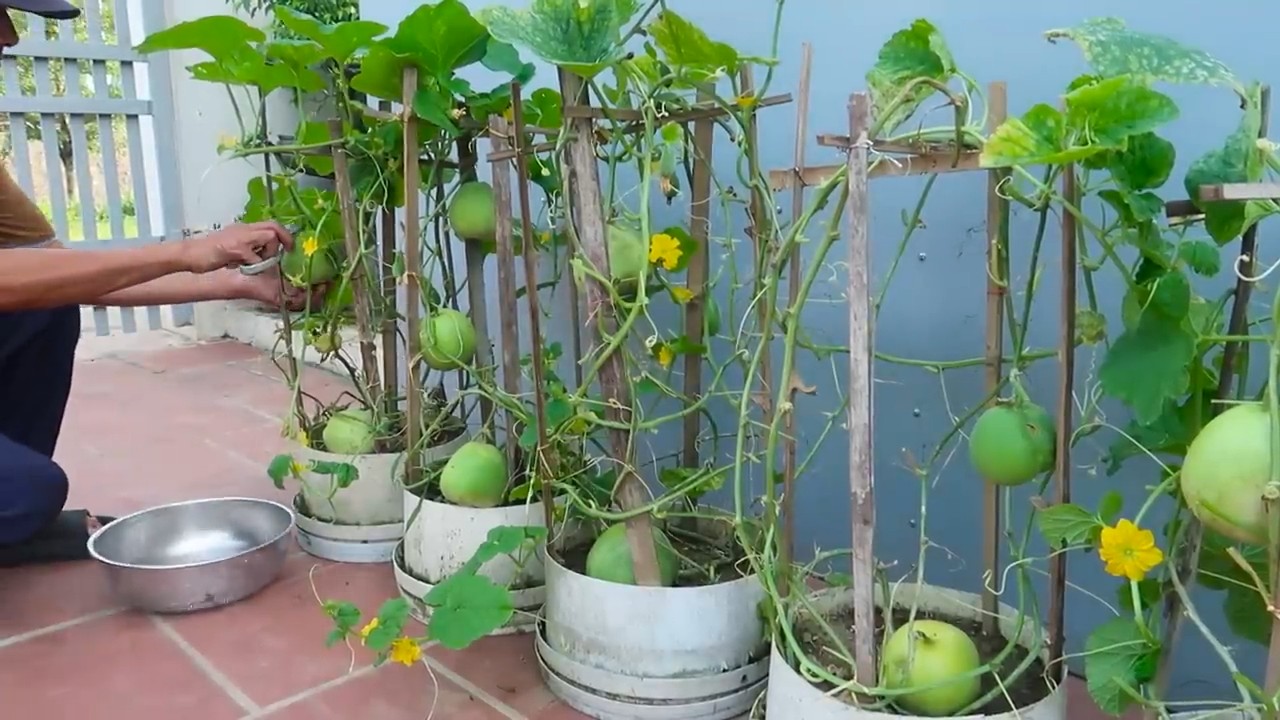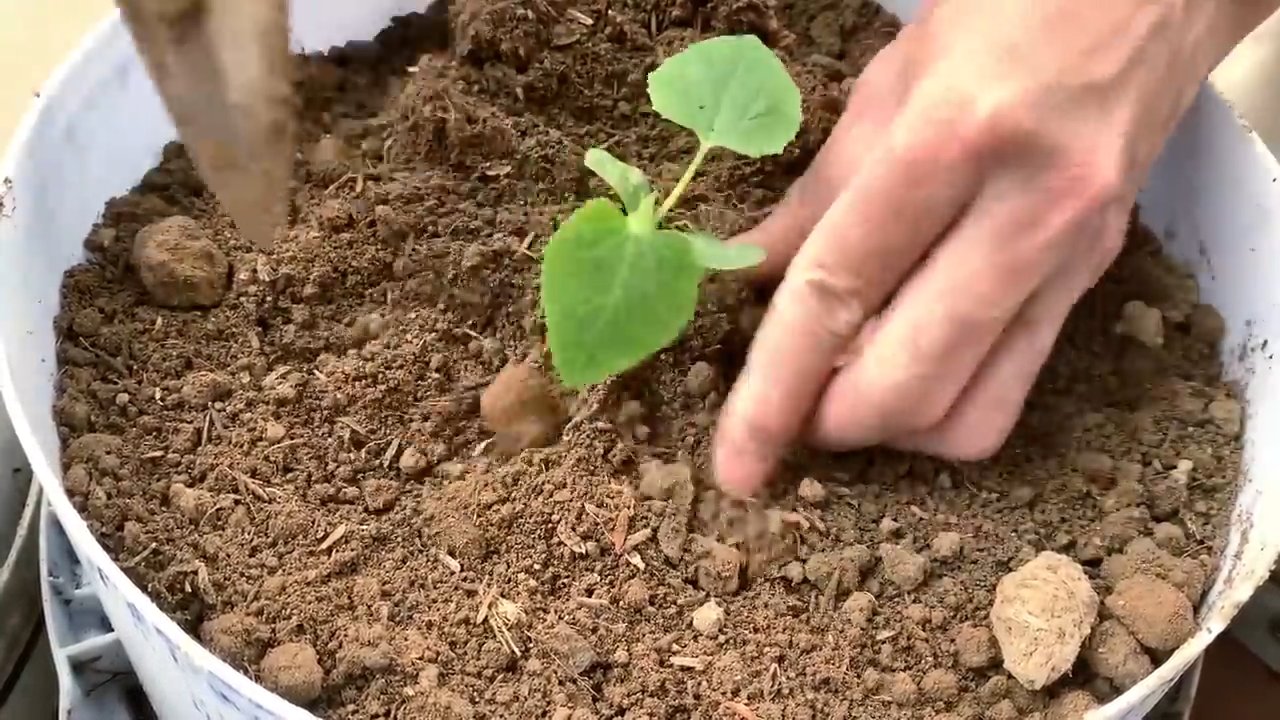Growing melons at home might seem like a challenge reserved for seasoned farmers, but I’m here to tell you it’s totally achievable, even if you’re a beginner gardener like I once was! Imagine biting into a juicy, sun-ripened watermelon or cantaloupe that you nurtured from seed to fruit, right in your own backyard. That’s the magic we’re unlocking today!
Melons have a rich history, dating back to ancient Egypt and beyond, where they were prized for their sweetness and refreshing qualities. For centuries, they’ve been a symbol of abundance and summer’s bounty. But you don’t need acres of land to partake in this delicious tradition.
In this article, I’m going to share some of my favorite DIY tricks and hacks for successfully growing melons at home, regardless of your space or experience level. We’ll cover everything from choosing the right varieties for your climate to creating the perfect soil conditions and warding off pesky pests. Why spend a fortune at the grocery store when you can enjoy the unparalleled flavor of homegrown melons? Plus, there’s nothing quite like the satisfaction of harvesting your own food. Let’s get started and turn your garden into a melon paradise!

Growing Melons at Home: A Sweet DIY Project
Hey there, fellow gardeners! I’m so excited to share my experience with growing melons at home. It might seem daunting, but trust me, with a little planning and effort, you can enjoy juicy, homegrown melons right from your backyard. I’ve learned a lot over the years, and I’m here to guide you through the process.
Choosing Your Melon Variety
Before we dive into the nitty-gritty, let’s talk about choosing the right melon for your climate and space. Not all melons are created equal!
* Cantaloupe: A classic choice, cantaloupes are relatively easy to grow and offer that familiar sweet flavor. Look for varieties like ‘Athena’ or ‘Hales Best Jumbo’.
* Watermelon: Watermelons need a lot of space and sunshine, but the reward is well worth it. Consider bush varieties like ‘Bush Sugar Baby’ if you’re short on space, or go for a larger variety like ‘Crimson Sweet’ if you have the room.
* Honeydew: Honeydews are a bit more challenging than cantaloupes, but their smooth, sweet flesh is a delight. ‘Honey Globe’ is a popular and reliable variety.
* Specialty Melons: Don’t be afraid to experiment! There are many unique melon varieties out there, like Galia melons or Charentais melons. Just be sure to research their specific needs before planting.
Preparing Your Melon Patch
Melons are sun-loving, hungry plants. Proper soil preparation is key to a successful harvest.
* Sunlight: Melons need at least 6-8 hours of direct sunlight per day. Choose a location in your garden that gets plenty of sun.
* Soil: Melons thrive in well-drained, fertile soil. Amend your soil with plenty of compost or well-rotted manure before planting. This will improve drainage, add nutrients, and help retain moisture.
* Soil pH: Melons prefer a slightly acidic to neutral soil pH, around 6.0 to 6.8. You can test your soil pH with a home testing kit or send a sample to your local extension office.
* Spacing: Give your melon plants plenty of room to grow. Cantaloupes and honeydews need about 2-3 feet of space between plants, while watermelons need 3-4 feet. Bush varieties can be planted closer together.
* Raised Beds: If you have heavy clay soil, consider growing your melons in raised beds. This will improve drainage and warm the soil more quickly in the spring.
Step-by-Step Planting Guide
Now for the fun part – planting! I usually start my melon seeds indoors a few weeks before the last expected frost. This gives them a head start and protects them from cool temperatures.
1. Starting Seeds Indoors (Optional):
* About 4-6 weeks before the last expected frost, sow melon seeds in peat pots or seed trays filled with seed-starting mix.
* Plant the seeds about ½ inch deep.
* Keep the soil moist but not soggy.
* Provide warmth with a heat mat or by placing the trays in a warm location.
* Once the seedlings have developed a few true leaves, gradually acclimate them to outdoor conditions by hardening them off for a week before transplanting.
2. Direct Sowing (If Weather Permits):
* Wait until the soil has warmed to at least 70°F (21°C) before direct sowing melon seeds.
* Plant the seeds about 1 inch deep in hills or rows, following the spacing guidelines mentioned earlier.
* Water gently after planting.
3. Transplanting Seedlings:
* Choose a cloudy day to transplant your melon seedlings to minimize stress.
* Dig a hole slightly larger than the root ball of the seedling.
* Gently remove the seedling from its pot and loosen the roots.
* Place the seedling in the hole and backfill with soil.
* Water thoroughly after transplanting.
4. Mulching:
* Apply a layer of organic mulch, such as straw or shredded leaves, around your melon plants.
* Mulch helps retain moisture, suppress weeds, and regulate soil temperature.
* Black plastic mulch can also be used to warm the soil and promote faster growth, especially in cooler climates.
5. Watering:
* Melons need consistent moisture, especially during fruit development.
* Water deeply and regularly, aiming for about 1-2 inches of water per week.
* Avoid overhead watering, as this can promote fungal diseases. Drip irrigation is ideal.
* Reduce watering as the melons ripen to concentrate their sugars and improve flavor.
6. Fertilizing:
* Feed your melon plants with a balanced fertilizer every 2-3 weeks.
* Look for a fertilizer with a higher phosphorus content to promote fruit development.
* You can also use organic fertilizers like compost tea or fish emulsion.
7. Pollination:
* Melons rely on bees and other pollinators to set fruit.
* If you’re not seeing much bee activity in your garden, you may need to hand-pollinate your melon flowers.
* To hand-pollinate, use a small paintbrush to transfer pollen from the male flowers (which have a long, thin stem) to the female flowers (which have a small, immature melon behind the flower).
8. Pruning (Optional):
* Some gardeners prune their melon vines to encourage fruit production.
* You can remove some of the side shoots and leaves to improve air circulation and allow more sunlight to reach the developing melons.
* However, be careful not to remove too much foliage, as this can weaken the plant.
9. Supporting the Fruit (Optional):
* For larger melon varieties, you may need to support the fruit to prevent it from rotting on the ground.
* You can use slings made from old pantyhose or netting to support the melons.
* Place the slings under the melons as they start to develop.
Dealing with Pests and Diseases
Unfortunately, melons are susceptible to a few pests and diseases. Here’s how I deal with them:
* Squash Bugs: These pests can suck the sap from melon leaves and stems, causing them to wilt and die. Handpick them off the plants or use insecticidal soap.
* Cucumber Beetles: These beetles can transmit bacterial wilt, a disease that can kill melon plants. Control them with row covers or insecticides.
* Powdery Mildew: This fungal disease causes a white, powdery coating on melon leaves. Improve air circulation and use a fungicide if necessary.
* Fusarium Wilt: This soilborne disease can cause melon plants to wilt and die. Choose disease-resistant varieties and practice crop rotation.
* Aphids: These tiny insects can suck the sap from melon leaves, causing them to curl and distort. Spray them with insecticidal soap or release ladybugs to control them.
Harvesting Your Melons
This is the moment you’ve been waiting for! Knowing when to harvest your melons is crucial for getting the best flavor.
* Cantaloupe: Cantaloupes are ripe when the stem slips easily from the fruit with a gentle tug. The skin will also turn from green to tan, and the melon will have a sweet aroma.
* Watermelon: Watermelons are ripe when the tendril closest to the fruit turns brown and dry. The underside of the melon (where it rests on the ground) will also turn from white to yellow. You can also thump the melon – a ripe watermelon will sound hollow.
* Honeydew: Honeydews are ripe when the skin turns from green to creamy yellow and the blossom end (opposite the stem end) is slightly soft to the touch.
Enjoying Your Homegrown Melons
Congratulations! You’ve successfully grown your own melons. Now it’s time to enjoy the fruits (or rather, melons) of your labor.
* Storage: Store ripe melons in the refrigerator for up to a week.
* Serving: Cut your melons into wedges or cubes and enjoy them fresh.
* Recipes: Use your homegrown melons in salads, smoothies, or desserts. You can even grill them for a unique and delicious flavor.
Troubleshooting Tips
Even with the best planning, things can sometimes go wrong. Here are a few common problems and how to fix them:
* Melons not setting fruit: This could be due to poor pollination. Try hand-pollinating your melon flowers or attracting more bees to your garden.
* Melons cracking: This is often caused by inconsistent watering. Water deeply and regularly, especially during fruit development.
* Melons rotting on the vine: This could be due to fungal diseases

Conclusion
So, there you have it! Growing melons at home, while it might seem daunting at first, is an incredibly rewarding experience that brings the taste of summer right to your backyard. We’ve explored the key steps, from selecting the right varieties and preparing your soil to nurturing your plants and harvesting your delicious bounty. But why is this DIY approach a must-try?
Firstly, the flavor difference is undeniable. Store-bought melons, often picked before they’re fully ripe to withstand transportation, simply can’t compare to the sweetness and juiciness of a vine-ripened melon grown with your own two hands. You control the entire process, ensuring optimal conditions for flavor development.
Secondly, growing your own melons is a sustainable and cost-effective way to enjoy this summertime treat. You’ll reduce your reliance on commercially grown produce, minimize your carbon footprint, and potentially save money in the long run. Plus, there’s nothing quite like the satisfaction of harvesting something you’ve nurtured from seed to fruit.
Thirdly, it’s a fantastic learning experience. Gardening, in general, is a wonderful way to connect with nature, learn about plant life cycles, and develop new skills. Growing melons specifically presents unique challenges and opportunities for growth (pun intended!).
Ready to take your melon game to the next level? Consider these variations:
* **Vertical Gardening:** If you’re short on space, try growing smaller melon varieties like cantaloupe or personal-sized watermelons vertically on a trellis. This not only saves space but also improves air circulation and reduces the risk of fungal diseases.
* **Companion Planting:** Experiment with companion plants like marigolds, basil, or nasturtiums to deter pests and attract beneficial insects. These natural allies can help protect your melon plants and promote healthy growth.
* **Grafting:** For more advanced gardeners, grafting melon plants onto more vigorous rootstocks can improve disease resistance and yield. This technique requires some skill and practice but can be well worth the effort.
* **Different Varieties:** Don’t limit yourself to just one type of melon! Explore the vast array of melon varieties available, from honeydew and Crenshaw to Galia and Charentais. Each variety offers a unique flavor and texture profile, so you’re sure to find one (or several) that you love.
Ultimately, the best way to learn is by doing. Don’t be afraid to experiment, make mistakes, and learn from your experiences. Growing melons at home is a journey, not a destination. Embrace the process, enjoy the challenges, and savor the rewards.
We encourage you to give this DIY trick a try. Start small, choose a manageable variety, and follow the tips we’ve shared. And most importantly, don’t forget to share your experiences with us! We’d love to hear about your successes, your challenges, and any tips or tricks you’ve discovered along the way. Share your photos, stories, and questions in the comments below. Let’s build a community of home melon growers and spread the joy of homegrown goodness! Let us know what kind of **growing melons** you are trying out!
Frequently Asked Questions (FAQ)
1. What is the best time to start growing melons?
The best time to start growing melons depends on your climate and the specific variety you’re growing. Generally, melons are warm-season crops that require a long growing season (70-100 days). In most regions, you’ll want to start seeds indoors 4-6 weeks before the last expected frost. Once the soil has warmed up to at least 60°F (15°C) and the danger of frost has passed, you can transplant the seedlings outdoors. If you live in a warmer climate with a longer growing season, you can direct sow melon seeds into the garden after the soil has warmed up. Check your local extension office or seed packet for specific recommendations for your region and variety.
2. What kind of soil do melons need?
Melons thrive in well-drained, fertile soil that is rich in organic matter. The ideal soil pH is between 6.0 and 6.8. Before planting, amend your soil with compost, aged manure, or other organic matter to improve drainage, fertility, and water retention. Avoid heavy clay soils, as they can become waterlogged and inhibit root growth. If you have clay soil, consider growing melons in raised beds or containers. A soil test can help you determine the specific nutrient needs of your soil and guide your fertilization strategy.
3. How much sunlight do melons need?
Melons require at least 6-8 hours of direct sunlight per day to produce abundant, flavorful fruit. Choose a planting location that receives full sun throughout the day. If your garden is shaded for part of the day, try to position your melon plants so that they receive morning sun, which is less intense than afternoon sun. Insufficient sunlight can result in smaller, less flavorful melons.
4. How often should I water my melon plants?
Melons need consistent moisture, especially during fruit development. Water deeply and regularly, aiming to keep the soil consistently moist but not waterlogged. Avoid overhead watering, as this can promote fungal diseases. Instead, use a soaker hose or drip irrigation to deliver water directly to the roots. As the melons ripen, you can reduce watering slightly to concentrate the sugars and improve flavor. Monitor the soil moisture regularly and adjust your watering schedule accordingly.
5. What are some common pests and diseases that affect melons?
Melons are susceptible to a variety of pests and diseases, including aphids, squash bugs, cucumber beetles, powdery mildew, and fusarium wilt. Regularly inspect your plants for signs of pests or diseases and take action promptly. Use organic pest control methods such as insecticidal soap, neem oil, or handpicking to control pests. To prevent diseases, ensure good air circulation, avoid overhead watering, and choose disease-resistant varieties. Crop rotation can also help reduce the buildup of soilborne pathogens.
6. How do I know when my melons are ripe?
Determining when a melon is ripe can be tricky, but there are several indicators to look for. For watermelons, look for a dull rind, a yellowish spot on the underside where the melon rested on the ground (the “ground spot”), and a hollow sound when you thump the melon. For cantaloupes, look for a tan or yellowish rind, a fragrant aroma, and a stem that slips easily from the fruit. For honeydew melons, look for a creamy white or yellowish rind and a slightly soft texture. The best way to determine ripeness is to taste a small piece of the melon. If it’s sweet and juicy, it’s ready to harvest.
7. Can I grow melons in containers?
Yes, you can grow melons in containers, but you’ll need to choose smaller varieties and provide adequate support. Use a large container (at least 20 gallons) with good drainage. Fill the container with a high-quality potting mix and amend with compost or other organic matter. Provide a trellis or other support for the vines to climb. Water and fertilize regularly, and monitor for pests and diseases. Container-grown melons may require more frequent watering and fertilization than those grown in the ground.
8. How do I fertilize my melon plants?
Melons are heavy feeders and benefit from regular fertilization. Before planting, incorporate compost or aged manure into the soil. After planting, fertilize every 2-3 weeks with a balanced fertilizer or a fertilizer specifically formulated for fruits and vegetables. Avoid over-fertilizing with nitrogen, as this can promote leafy growth at the expense of fruit production. As the melons develop, switch to a fertilizer that is higher in phosphorus and potassium to promote fruit development and sweetness. Follow the instructions on the fertilizer label carefully.
9. What is the best way to store harvested melons?
Store harvested melons in a cool, dry place. Whole melons can be stored at room temperature for several days or in the refrigerator for up to two weeks. Cut melons should be stored in the refrigerator in an airtight container and consumed within a few days. To prevent the melon from drying out, wrap the cut surface with plastic wrap or place it in a resealable bag.
10. Can I save seeds from my homegrown melons?
Yes, you can save seeds from your homegrown melons, but it’s important to note that hybrid varieties may not produce true-to-type offspring. To save seeds, allow the melon to fully ripen on the vine. Scoop out the seeds and rinse them thoroughly to remove any pulp. Spread the seeds on a paper towel to dry completely. Store the dried seeds in an airtight container in a cool, dark place. Label the container with the variety and date. Saved seeds can be viable for several years.




Leave a Comment